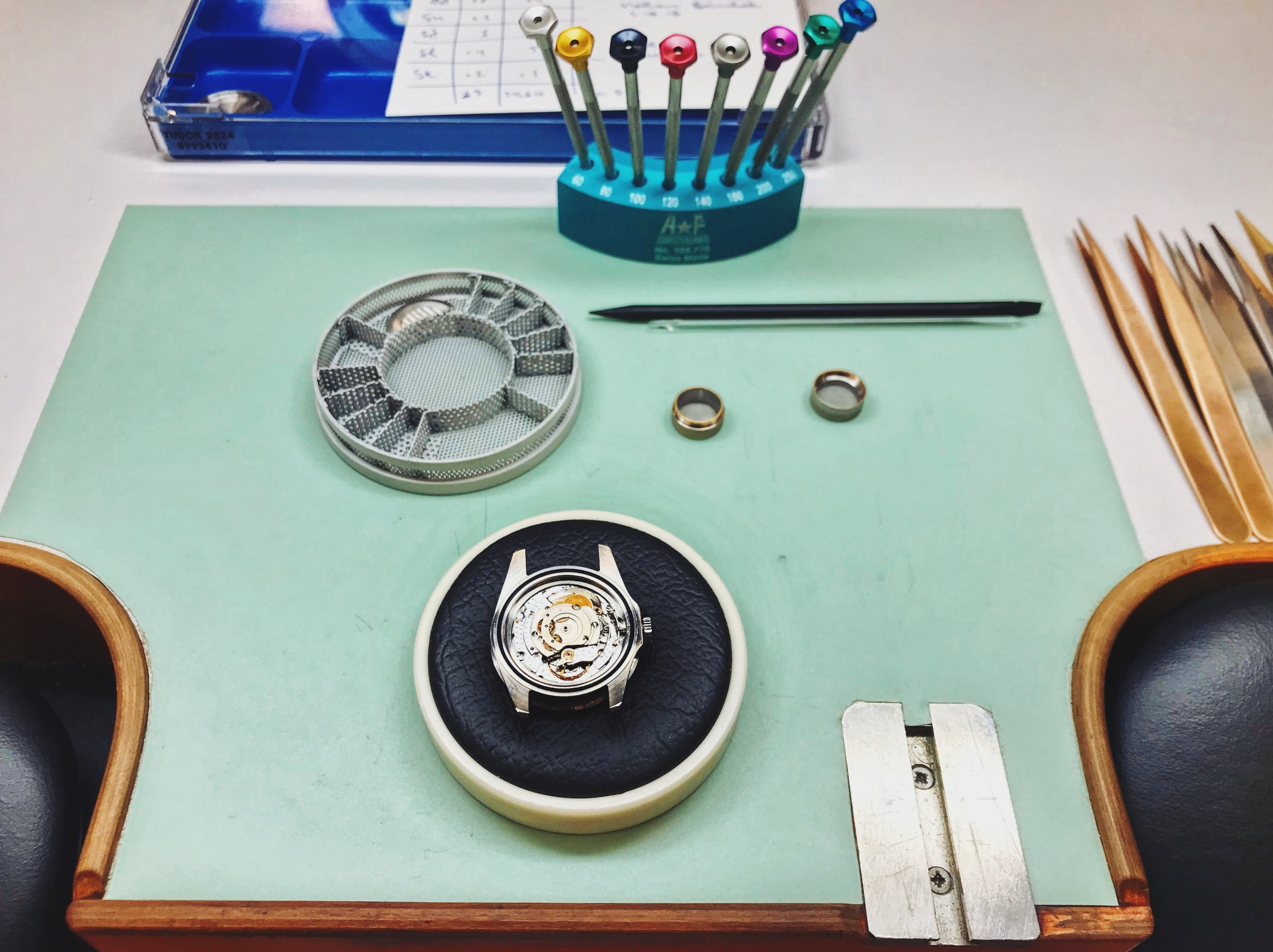Training Movement: ETA 2824

With SAWTA 2 in the books, we're moving off of the 6497 to a more modern movement: the ETA 2824!
The 2824 is one of the most popular automatic movements on the market, and can be found in a huge variety of watches. It's an automatic high-beat movement with a basic calendar function, and it's incredibly well-regarded and durable. Basic movements can be found in the mid-level price tier (~$1,000-3,000), and high-grade chronometer movements can command even higher prices.
The biggest difference between this movement and the 6497 is simply the size. The 6497 is a 16.5 ligne (36.6 mm) pocket watch movement that is popularly re-cased in wristwatches, but the 2824 is a significantly smaller and thinner 11.5 ligne (25.6 mm) movement. Volumetrically, the 2824 is just over half the size of the 6497.
Equally important is the automatic system, which allows the watch to wind itself via the motion of the wearer's wrist. Not only does this allow the user to "set it and forget it," forgoing the daily wind ritual, but it keep the watch in a more constant state of wind, allowing better rate stability. The 2824 has bi-directional winding unlike the 7750, which only winds in one direction. This is more efficient, though more complex.
The 2824 also beats at a much higher rate than the 6497: 28,800 bph compared to 18,000 bph (on our versions). Higher beat watches have advantages and disadvantages, but the higher frequency should theoretically allow for more stable and accurate timekeeping—an interrupted "lost" beat is less of a loss if there are more of them.
Between this, the 7750 and the 6497, we've been exposed to the "big 3" ETA movements that dominate the marketplace. It's exciting to have practice on all three this early in our program! We'll be working much more on this in the next few months.
Watchmaking student at the Lititz Watch Technicum, formerly a radio and TV newswriter in Chicago.







